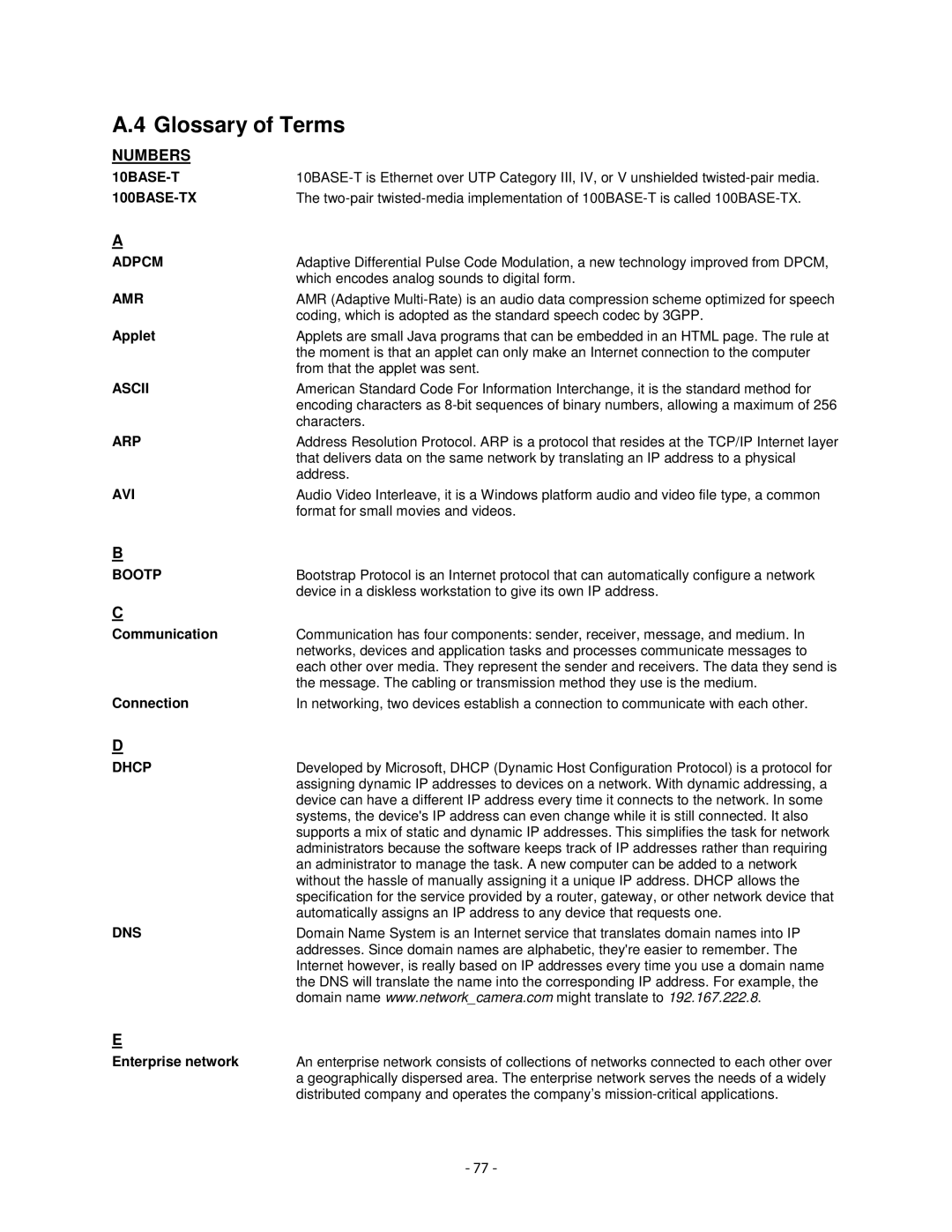A.4 Glossary of Terms
NUMBERS
The |
A
ADPCM | Adaptive Differential Pulse Code Modulation, a new technology improved from DPCM, |
| which encodes analog sounds to digital form. |
AMR | AMR (Adaptive |
| coding, which is adopted as the standard speech codec by 3GPP. |
Applet | Applets are small Java programs that can be embedded in an HTML page. The rule at |
| the moment is that an applet can only make an Internet connection to the computer |
| from that the applet was sent. |
ASCII | American Standard Code For Information Interchange, it is the standard method for |
| encoding characters as |
| characters. |
ARP | Address Resolution Protocol. ARP is a protocol that resides at the TCP/IP Internet layer |
| that delivers data on the same network by translating an IP address to a physical |
| address. |
AVI | Audio Video Interleave, it is a Windows platform audio and video file type, a common |
| format for small movies and videos. |
B
BOOTP | Bootstrap Protocol is an Internet protocol that can automatically configure a network |
| device in a diskless workstation to give its own IP address. |
C |
|
Communication | Communication has four components: sender, receiver, message, and medium. In |
| networks, devices and application tasks and processes communicate messages to |
| each other over media. They represent the sender and receivers. The data they send is |
| the message. The cabling or transmission method they use is the medium. |
Connection | In networking, two devices establish a connection to communicate with each other. |
D |
|
DHCP | Developed by Microsoft, DHCP (Dynamic Host Configuration Protocol) is a protocol for |
| assigning dynamic IP addresses to devices on a network. With dynamic addressing, a |
| device can have a different IP address every time it connects to the network. In some |
| systems, the device's IP address can even change while it is still connected. It also |
| supports a mix of static and dynamic IP addresses. This simplifies the task for network |
| administrators because the software keeps track of IP addresses rather than requiring |
| an administrator to manage the task. A new computer can be added to a network |
| without the hassle of manually assigning it a unique IP address. DHCP allows the |
| specification for the service provided by a router, gateway, or other network device that |
| automatically assigns an IP address to any device that requests one. |
DNS | Domain Name System is an Internet service that translates domain names into IP |
| addresses. Since domain names are alphabetic, they're easier to remember. The |
| Internet however, is really based on IP addresses every time you use a domain name |
| the DNS will translate the name into the corresponding IP address. For example, the |
| domain name www.network_camera.com might translate to 192.167.222.8. |
E |
|
Enterprise network | An enterprise network consists of collections of networks connected to each other over |
| a geographically dispersed area. The enterprise network serves the needs of a widely |
| distributed company and operates the company’s |
- 77 -
